Current state of the project![]()
It’s no longer just a collection of random bits and pieces glued together. This time I’m actually happy with how it works and looks. By no means is it perfect, but it’s getting closer.
You can watch this video if you want to learn more about it – and not be forced to read. However, the text goes into more detail.
More details
The turret has been re-built from scratch with weight reduction as the most important factor. Firepower was right behind it. I wanted it to shoot harder than the blaster I had, fit more balls and if possible be a bit more precise. But at the same time I needed it to be lighter and smaller, so it wouldn’t need crazy powerful motors to be fast. + Being relatively cheap to build and easy to 3D print is a nice bonus.
| Old turret | New turret | |
| Magazine | 50 [balls] | ~90 [balls] |
| Shooting rate | 8 [balls/s] | 10 [balls/s] |
| “muzzle velocity” | 110 [km/h] | ~180-190 [km/h] |
| Weight | 2 [kg] (just blaster) | 2.5 [kg] (everything) |
| Height | 343 [mm] | 262 [mm] |
| Width | 202 [mm] | 154 [mm] |
| Length | 572 [mm] | 367 [mm] |
While the table does not show a weight reduction, the stats are a bit misleading. I’ve lost most of the parts used in the previous design, so I cannot properly weight them, that’s why it shows only the weight of the blaster for the previous design, and the entire assembly weight for new design. Anyway, new design is smaller and a lot lighter. I’ve also been able to move the battery away from the moving parts, so the inertia of the turret is greately reduced – this way I could make it way faster and responsive. Further weight reduction is possible, but I did not find it necessary.
The body
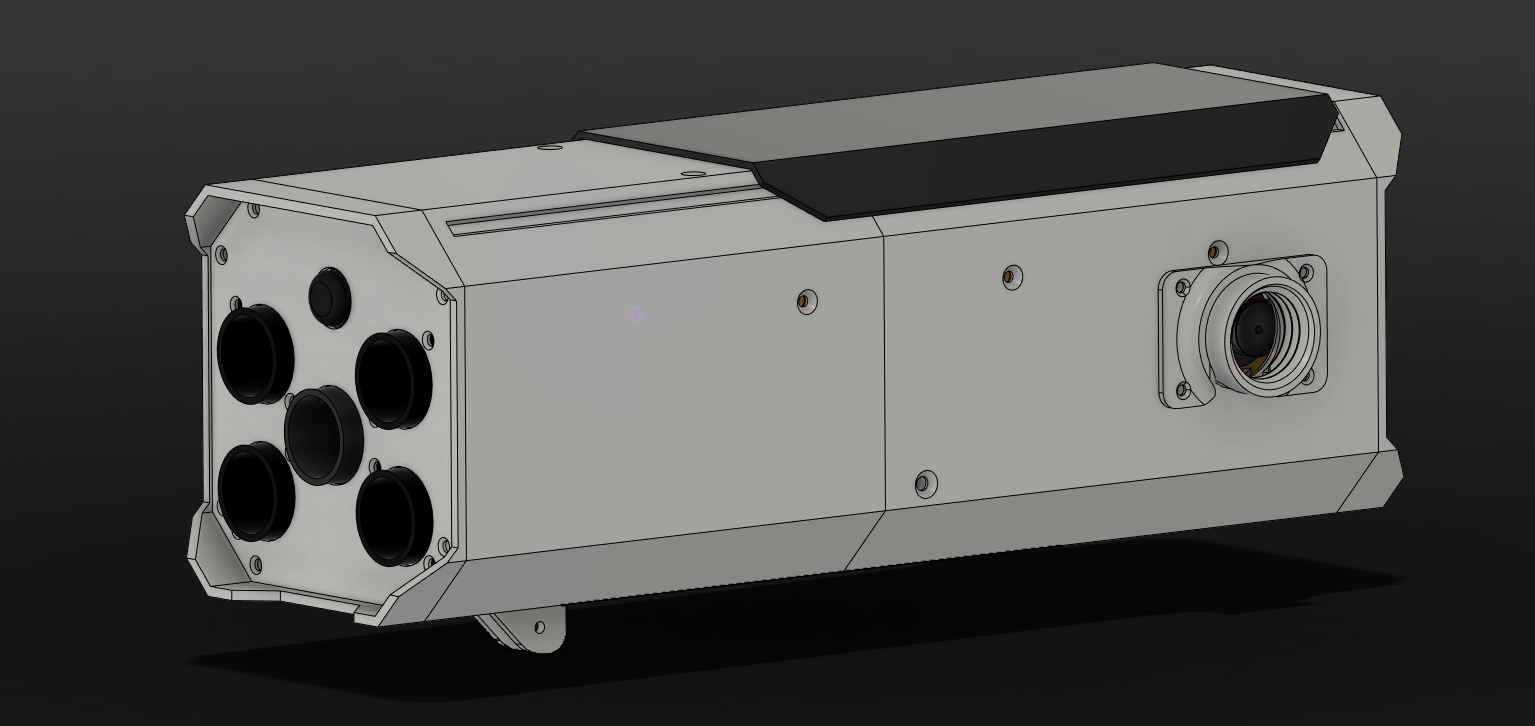
Everything fits nicely into 120x120x367 box. At first I just wanted to test it, so I made it super simple, but then I started to like the design so it stayed.

The front of it is the only interesting part. It has 5 barrels ( 4 of them are fake. In the future I’d love to use them to shoot small fireworks, but I’m concerned about the legality of making it do so – I’ll look into it) There’s also a camera that can be used both – for knowing what the blaster is pointing at, and for tracking humans.
The shooty bit
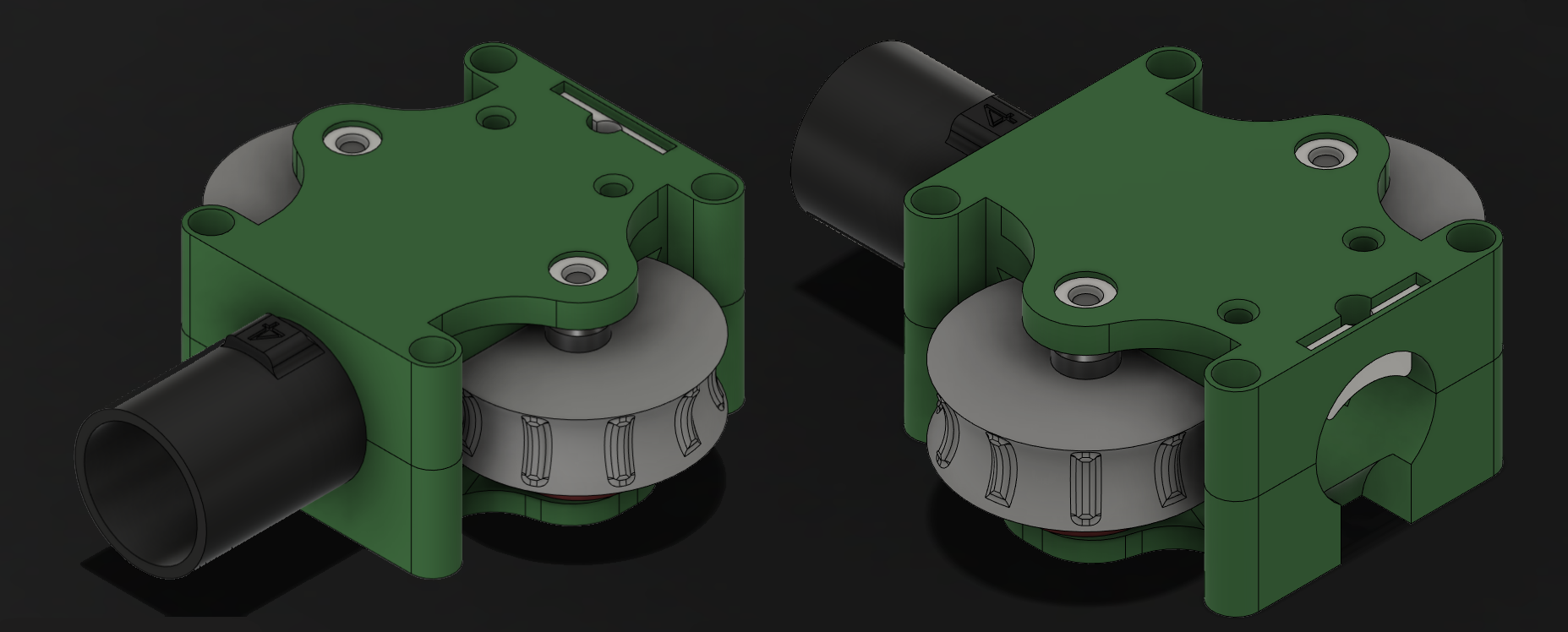
The part that flings the balls is obviously the most important part of the blaster. In the current design it uses two drone BLDC motors (2400 KV), two bearings for additional stiffness, plus a few screws and heat-set-inserts for holding everything together. Also, a spring from a clicky ball-point pen is used to make sure that it does not fire before you pull the trigger. This makes it a small and light-weight design, with suprising fire power.
The hopper
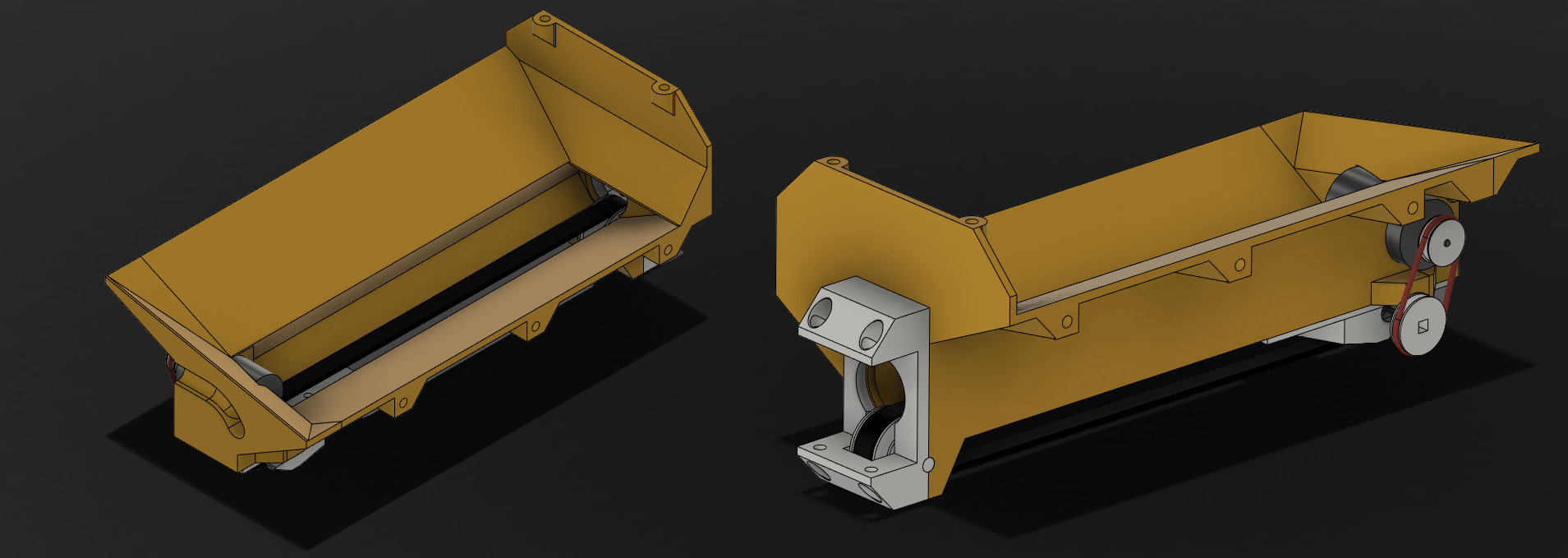
A functional but rather flawed design
Similarry to the NERF PERSES blaster – it uses a belt to get the HIR rounds between the intertial wheels of the shoting mechanism. The cheapest timing belt type I could find in Poland is the T5 belt – so that’s what I’ve built it for, but to be honest it can probably be used with anything that has teeth and isn't "too stretchy". I’m 90% sure you could print it out of TPU and it would work.
Flaw 1: Fits 90 balls but tends to get stuck if the number of them goes above 60.
Flaw 2: The motor it’s using is something I’ve found lying around in the office, and I couldn’t give you the specs of it if my life depended on it.
Flaw 3: I ran out of place for any good designs for power transmition so an O-ring is used as the driving belt. It works great most of the time, but can sometimes slip if the force needed to move the balls out of the hopper is too high. Usually it means that there’s a bigger problem – so I could potentially call this problem a “safety feature”.
Tilt movement
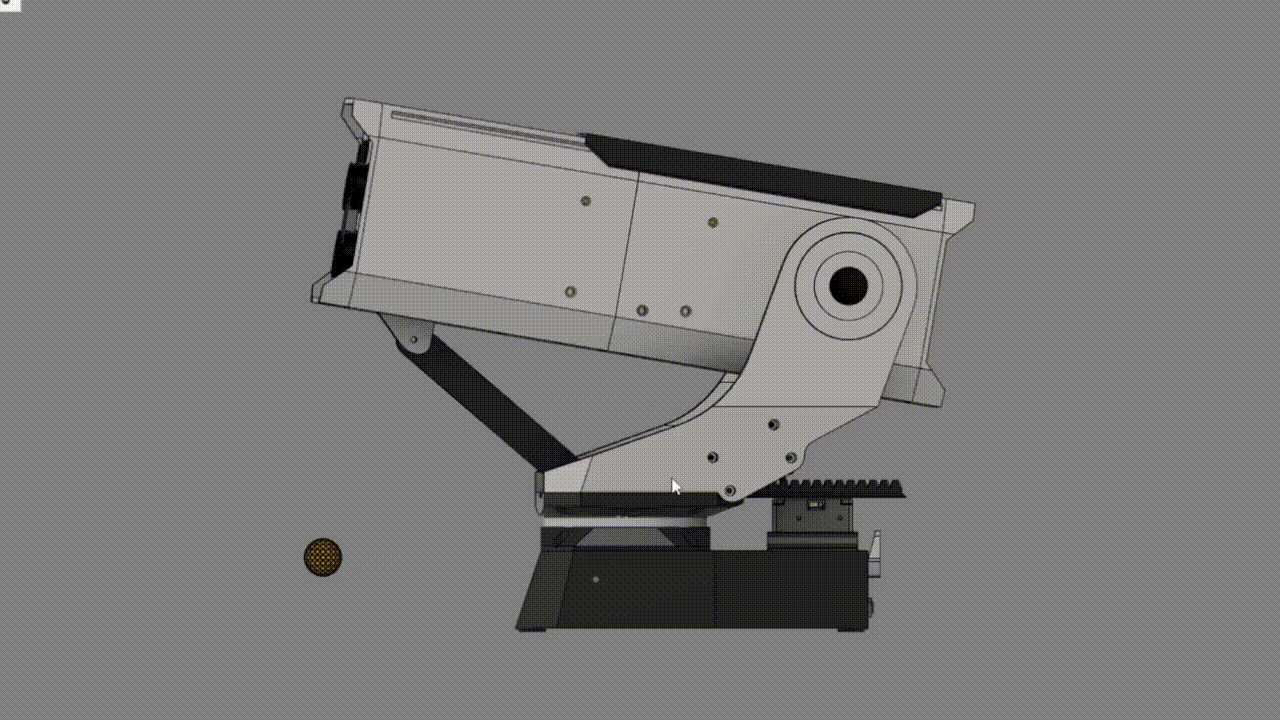
I hated the way the motors were sticking out in the previous design, so I’ve decided to hide them....
Read more » Kacper
Kacper
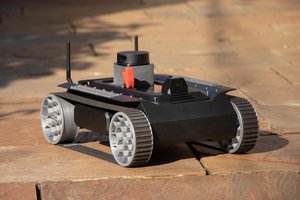
 Maximiliano Palay
Maximiliano Palay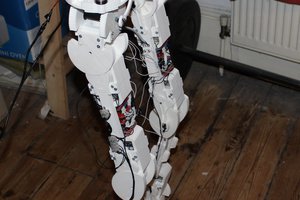
 Dan DWRobotics
Dan DWRobotics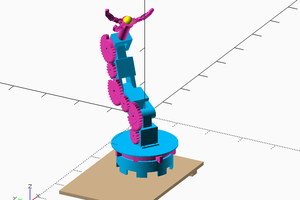
 Les Hall
Les Hall
 Michael Graham
Michael Graham